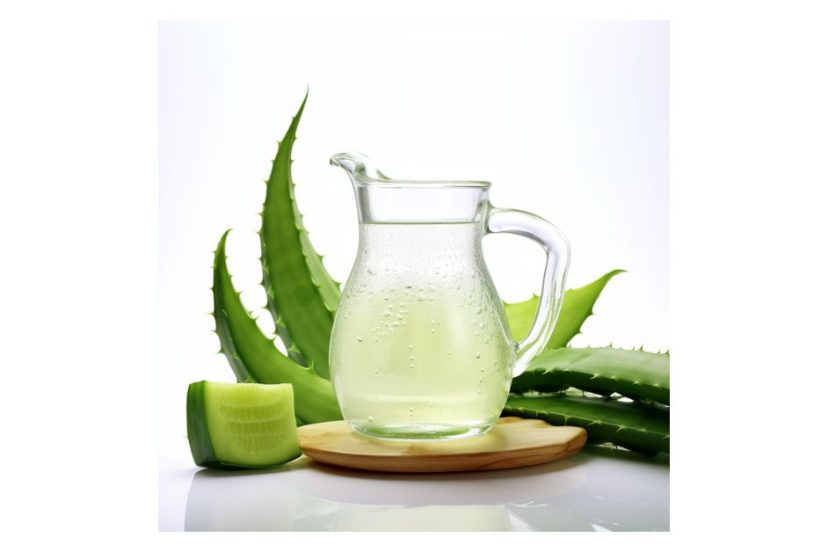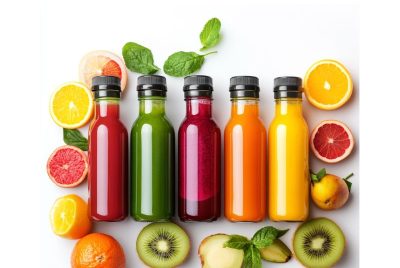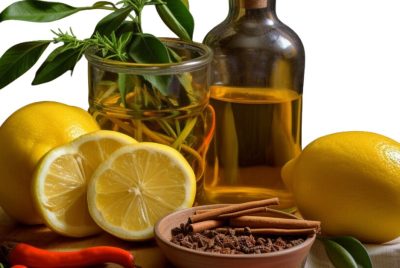How to Make Aloe Vera Juice
As an avid enthusiast of juicing for health, I am excited to share with you the process of making aloe vera juice. Aloe vera is a succulent plant known for its numerous health benefits. From improving digestion to supporting the immune system, it is a versatile and refreshing addition to your wellness routine. In this post, I will guide you through the steps of making aloe vera juice, from selecting the right plant to preparing and extracting the gel. Let’s dive in!
Aloe Vera, often touted as the ‘plant of immortality’, isn’t a newbie in the health and wellness sphere. And why wouldn’t it be? The succulent is teeming with potent nutrients and vitamins that make it a sought-after ingredient for various health, skin, and hair regimes. And one of the best ways to reap its benefits is by consuming it as juice.
Benefits of Aloe Vera Juice
Aloe Vera juice has been a central part of traditional medicine for centuries and boasts a wealth of health benefits. It’s a potent detoxifier, an incredible hydrator, and a strong immune booster. It aids digestion, reduces inflammation, and gives your skin a healthy glow. Before we delve into the process, let’s explore some of the incredible benefits.
2.1. Digestive Health
It is renowned for its soothing properties on the digestive system. It can help alleviate symptoms of indigestion, bloating, and heartburn. The natural enzymes present in aloe vera promote healthy digestion and regulate bowel movements.
2.2. Hydration
Staying hydrated is essential for overall well-being. It is an excellent way to quench your thirst and replenish your body with essential nutrients. It contains a high water content, which helps to hydrate your cells and maintain optimal hydration levels.
2.3. Immune System Support
Aloe vera juice is packed with vitamins, minerals, and antioxidants that support a healthy immune system. Regular consumption can help boost your body’s natural defenses, making you less susceptible to infections and illnesses.
The Anatomy of an Aloe Vera Plant
The Aloe Vera plant is composed of two main parts: the gel and the latex. The gel is the clear, jelly-like substance found in the inner part of the plant’s leaf. The latex is the yellow part that lies just beneath the plant’s skin.
Choosing the Right Aloe Vera Plant
When it comes to selecting an Aloe Vera plant, size matters. For juicing, opt for mature, healthy plants with thick, fleshy leaves. The leaves should be a rich green color, free from spots or blemishes.
Choosing the Right Aloe Vera Plant
To make fresh aloe vera juice, it’s important to choose the right plant. Here are some key considerations when selecting an aloe vera plant.
3.1. Aloe Vera Barbadensis Miller
The Aloe Vera Barbadensis Miller variety is widely recognized for its therapeutic properties. It contains a high concentration of beneficial compounds, making it the ideal choice for making aloe vera juice. Look for this specific variety when purchasing or growing your aloe vera plant.
3.2. Organic and Pesticide-Free
To ensure the highest quality juice, opt for organic aloe vera plants that have been grown without the use of pesticides. This ensures that you’re consuming aloe vera gel free from harmful chemicals.
Harvesting Aloe Vera Leaves
Once you have a healthy aloe vera plant, it’s time to harvest the leaves for juice extraction. Follow these steps carefully to ensure safety and maximum yield.
4.1. Mature Leaves
Choose mature leaves that are thick and plump. These leaves contain the highest concentration of gel, which is essential for making aloe vera juice. Avoid using young or newly sprouted leaves as they may not have fully developed their beneficial properties.
4.2. Safety Precautions
Before harvesting the leaves, make sure to wear protective gloves as the edges of the aloe vera leaves can be sharp. This will prevent any accidental cuts or injuries. Always exercise caution when handling plants.
Preparing Aloe Vera Leaves
Properly preparing aloe vera leaves is crucial to remove the latex, a yellow substance found beneath the outer layer of the leaf. Follow these steps to prepare the leaves for gel extraction.
5.1. Washing and Peeling
Thoroughly wash the aloe vera leaves under running water to remove any dirt or impurities. Use a clean knife to remove the outer layer, exposing the translucent gel underneath.
5.2. Removing the Latex
After peeling the leaves, place them upright in a bowl for several minutes to allow the yellow latex to drain out. This step is essential as the latex can cause digestive discomfort. Rinse the leaves once again to ensure all traces of latex are removed.
Extracting Aloe Vera Gel
The gel is the prized component of the aloe vera leaf and contains the beneficial compounds that make aloe vera juice so valuable. Here are two popular methods for extracting aloe vera gel.
6.1. Using a Knife
Carefully use a knife to separate the gel from the leaf. Make a vertical incision down the length of the leaf and scrape the gel with a spoon. Be gentle to avoid collecting any green parts of the leaf, as they can impart a bitter taste to the juice.
6.2. Aloe Vera Gel Extraction Tips
To extract the maximum amount of gel, you can gently squeeze the remaining leaf after scraping off the initial gel. Ensure you collect all the gel in a clean bowl for further processing.
Making Aloe Vera Juice
Now that you have the fresh aloe vera gel, it’s time to transform it into refreshing and nutritious juice. There are a few methods you can use to make aloe vera juice.
7.1. Blending Method
One simple method is to blend the aloe vera gel with water or your favorite juice using a high-speed blender. This method ensures a smooth consistency and allows you to customize the intensity of the flavor.
7.2. Straining Method
If you prefer a clear juice without any pulp or fiber, you can strain the blended mixture using a fine mesh strainer or cheesecloth. This method provides a clear and refreshing aloe vera juice.
Enhancing the Flavor
While aloe vera juice has its distinct taste, you can enhance its flavor by adding a few ingredients. Here are some suggestions to make your aloe vera juice more enjoyable.
8.1. Adding Citrus Juice
Squeeze a fresh lemon or lime to add a zesty twist. Citrus juices not only enhance the flavor but also provide additional health benefits and a boost of vitamin C.
8.2. Sweetening Options
If you find the natural taste is too bitter, you can sweeten it with natural sweeteners like honey, agave syrup, or stevia. Start with a small amount and adjust to your desired sweetness level.
Storing Aloe Vera Juice
Proper storage ensures the longevity and freshness of your homemade aloe vera juice. Consider these methods for preserving your juice.
9.1. Refrigeration
To keep it fresh for an extended period, store it in a sealed glass container in the refrigerator. It is recommended to consume the juice within a week to maintain its nutritional value.
9.2. Freezing
If you have a surplus of aloe vera juice, you can freeze it in ice cube trays or freezer-safe containers. This allows you to enjoy the juice for a longer duration without compromising its quality.
Consuming Aloe Vera Juice
Now that you have your homemade aloe vera juice, it’s important to consume it in the right way to maximize its benefits. Consider the following recommendations.
10.1. Recommended Dosage
Start with small quantities, such as 1-2 ounces per day, and gradually increase the dosage if desired. Monitor how your body responds to the juice and adjust accordingly.
10.2. Time of Consumption
It can be consumed on an empty stomach in the morning or as a refreshing beverage throughout the day. Listen to your body and find the time that works best for you.
Safety Considerations
While it offers numerous health benefits, it’s important to be aware of potential risks and safety considerations.
11.1. Allergies and Sensitivities
Some individuals may be allergic to aloe vera or have sensitivities to its components. It’s advisable to perform a patch test before consuming a larger quantity and discontinue use if any adverse reactions occur.
11.2. Possible Side Effects
Excessive consumption can lead to digestive discomfort, including diarrhea and stomach cramps. It’s crucial to follow recommended dosages and consult with a healthcare professional if you have any underlying health conditions.
Conclusion
Making your own is a rewarding and healthy endeavor. By following the steps outlined in this post, you can enjoy the numerous benefits of aloe vera in a refreshing and natural way. Remember to choose the right aloe vera plant, harvest and prepare the leaves carefully, and experiment with different methods to make your perfect aloe vera juice. Cheers to your health and well-being!
FAQs
1. Can I make aloe vera juice from store-bought gel?
Yes, you can make it using store-bought gel. However, be sure to choose a high-quality, organic gel without any additives or preservatives for the best results.
2. How long does homemade aloe vera juice last?
It can last up to a week when stored properly in the refrigerator. It’s important to consume it within this timeframe to maintain its freshness and nutritional value.
3. Can I consume aloe vera juice while pregnant or breastfeeding?
It’s recommended to consult with your healthcare provider before consuming aloe vera juice during pregnancy or while breastfeeding. They can provide personalized advice based on your specific situation.
4. Are there any alternatives to sweeten aloe vera juice besides honey?
Yes, besides honey, you can sweeten it with natural alternatives like agave syrup, stevia, or maple syrup. Choose the option that suits your taste preferences and dietary needs.
5. Can I freeze aloe vera gel for later use?
While it’s possible to freeze aloe vera gel, it may alter the consistency and texture. It’s generally more common to freeze aloe vera juice for convenient storage and usage.
Here are two links to scientific studies and reviews discussing the health benefits and uses of Aloe Vera:
- Aloe Vera: A Short Review This review from the Indian Journal of Dermatology discusses the properties of Aloe Vera and its uses in medicine. The article talks about the various benefits of Aloe Vera, including its wound healing properties, anti-inflammatory effects, and more.
- Evaluation of biological properties and clinical effectiveness of Aloe vera: A systematic review This systematic review from the Journal of Traditional and Complementary Medicine summarizes the various bioactive compounds in Aloe Vera, the biological properties of the plant, and its clinical effectiveness. This is particularly useful for understanding the benefits of Aloe Vera juice and its potential impacts on human health.




